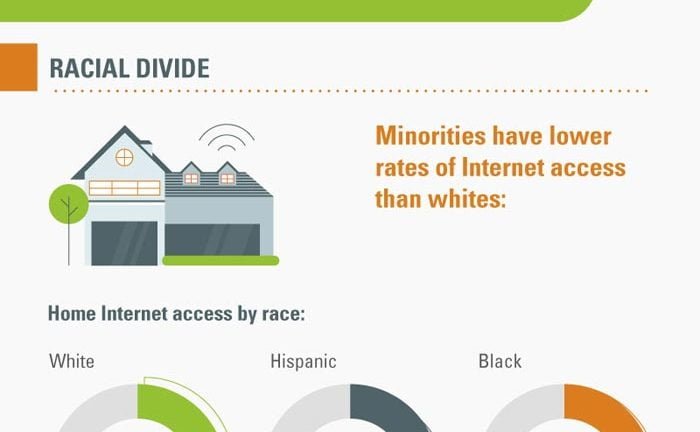As we advance further into the 21st century, our use of technology increases at a nearly exponential rate.
Due to the technological explosion, it is also important to take a look at the availability of internet use in the United States and throughout the World as a whole.
For many of us, it may be hard to believe that not everyone has access to an internet-ready computer every day.
In order to help us out with this vision, Online IT Degree recently published an infographic (posted below) containing statistics in relation to the worldwide internet and digital divide in 2012.
After reviewing the infographic it may be more evident that many people within the world have limited or no internet access at all.
See Also: 2012 Smartphone Usage Statistics
Those who do not have access to high-speed internet tend to have less opportunities for higher education, lower income levels and will have trouble competing with those who do have access to high speed internet in today’s global economy.
2012 Digital Divide Infographic Highlights:
- The Internet is responsible for 21% of economic growth in developed nations.
- Over 6,000,000 students in the US are taking online classes.
- 80% of teachers in the US feel that e-learning increases the quality of education.
- 100,000,000 houses in the US still lack high-speed internet access.
- Almost half of the poorest households in the US do not own a computer.
- Only 4% of the riches households in the US do not own a computer.
- Minorities in the US have significantly lower rates of internet access than whites.
- Rural households are 2 times more likely to have dial-up internet than urban households.
- The United States is ranked 12th in terms of internet access penetration worldwide.
- The United States is ranked 14th in terms of broadband internet penetration worldwide.
- 96% of Americans have 2 or fewer internet service provider (ISP) choices (lack of competition).
- Emerging technologies are costing Americans a lot more money than citizens of other developed nations.
- The FCC has launched a “National Broadband Plan” to help increase internet penetration in the United States.




